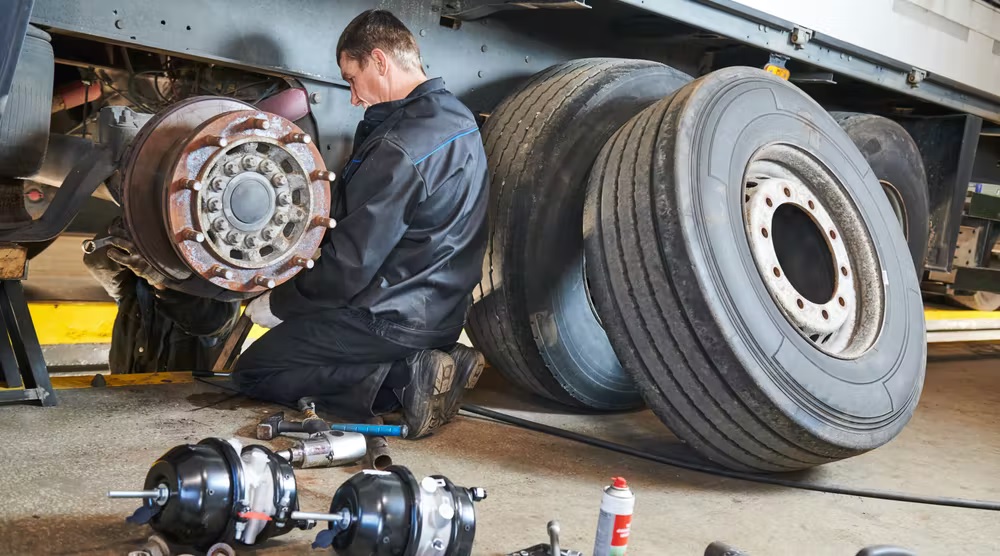Prolonging the lives of truck tires has never been so important. Between price increases and diesel at well over $5 a gallon, the stress on operating costs is impossible for fleets to ignore.
Every step must be taken to maximize the lives of tire casings to achieve the lowest possible cost per mile. Maintaining correct inflation plays a major role in the ability to retread—perhaps the most significant. Nothing turns a $500 truck tire into a twisted mess of sidewalls and steel like underinflation. Gator season also is officially here, and gators love the heat that comes with overloaded tires because the tire pressure hasn’t been checked or adjusted.
Another reason for an underinflated or overloaded tire is a puncture that breaches the inner liner, which is a thin layer of special rubber on the inside of a tubeless tire that is, for the most part, airtight. If there is a hole in the inner liner, the tire will start losing air pressure. In almost every case, an object causes a breach to occur. Tire guys love to collect stuff they’ve pulled out of flat tires; my personal favorites were a spark plug, an animal bone, and a rake.
Minor punctures caused by nails, screws, and other small objects are repaired easily practically anywhere. Modern puncture repair equipment and materials make it easy to remove the damage from the injury, fill it with rubber so the steel belts are not exposed to moisture, and install a repair unit on the inner liner to seal the breach. Thousands of puncture repairs are successfully installed every day. In almost every case, the leak is stopped and most of the time the casing can be saved.
When the punctures are small (3/8 in. or less) and located in the center of the tread, the standard plug and patch are installed. Smaller injuries in the shoulder (5/16 in. or less) use the same plug-and-patch process, but a larger repair unit is required so the reinforcement plies do not end in the flex zone of the sidewall. When a tread or shoulder injury is outside the repairable limit or the damage is in the sidewall, a section repair is necessary.
The term “section repair” refers to the type, size, and location of the injury. In the tread, injuries up to 1.5 in. can be repaired, while the repairable limits on sidewall injuries vary depending on size and can be up to 5 in. long and 1 5/8 in. wide. In both cases, all the damaged body plies and belt cables are removed and trimmed back to solid rubber. Raw rubber is applied to the void and then cured in a retread chamber or with a device that applies heat and pressure directly to the repaired area. A large, reinforced repair unit is installed on the inside of the tire to seal the inner liner and provide additional support around the injury.
When properly installed, a section repair restores the original condition of the casing so it can be considered for retreading when the tread is worn. Section repair costs more than a puncture repair because it requires special equipment and tooling in the hands of a technician with a higher skill level. A section repair also requires more time to remove the damaged material and cure the repair for it to become part of the tire.
It’s big business in the off-the-road and earthmoving industries because the tires are too expensive to just throw away when the injury is too large to repair in the field. Section repairs are widely accepted because they can withstand the severe service in mining and construction applications. During a major shortage years ago in a few sizes, companies were literally digging up old, damaged tires so they could be repaired and returned to service. Desperate times called for desperate measures.
We haven’t reached that point yet in the commercial truck tire space, but the cost to replace a new tire is not showing any signs of going down. Likewise, the value in preserving the casing is expected to increase as retreading becomes a more important component of every fleet tire program. The technology in tools, equipment, and materials has improved over the years, so there is a history of performance and safety with section repairs that should not be overlooked. Section repairs save casings, and casings save money when they are part of a retread program. It’s a simple equation that adds up to lower tire costs.
Source: https://www.fleetmaintenance.com/





